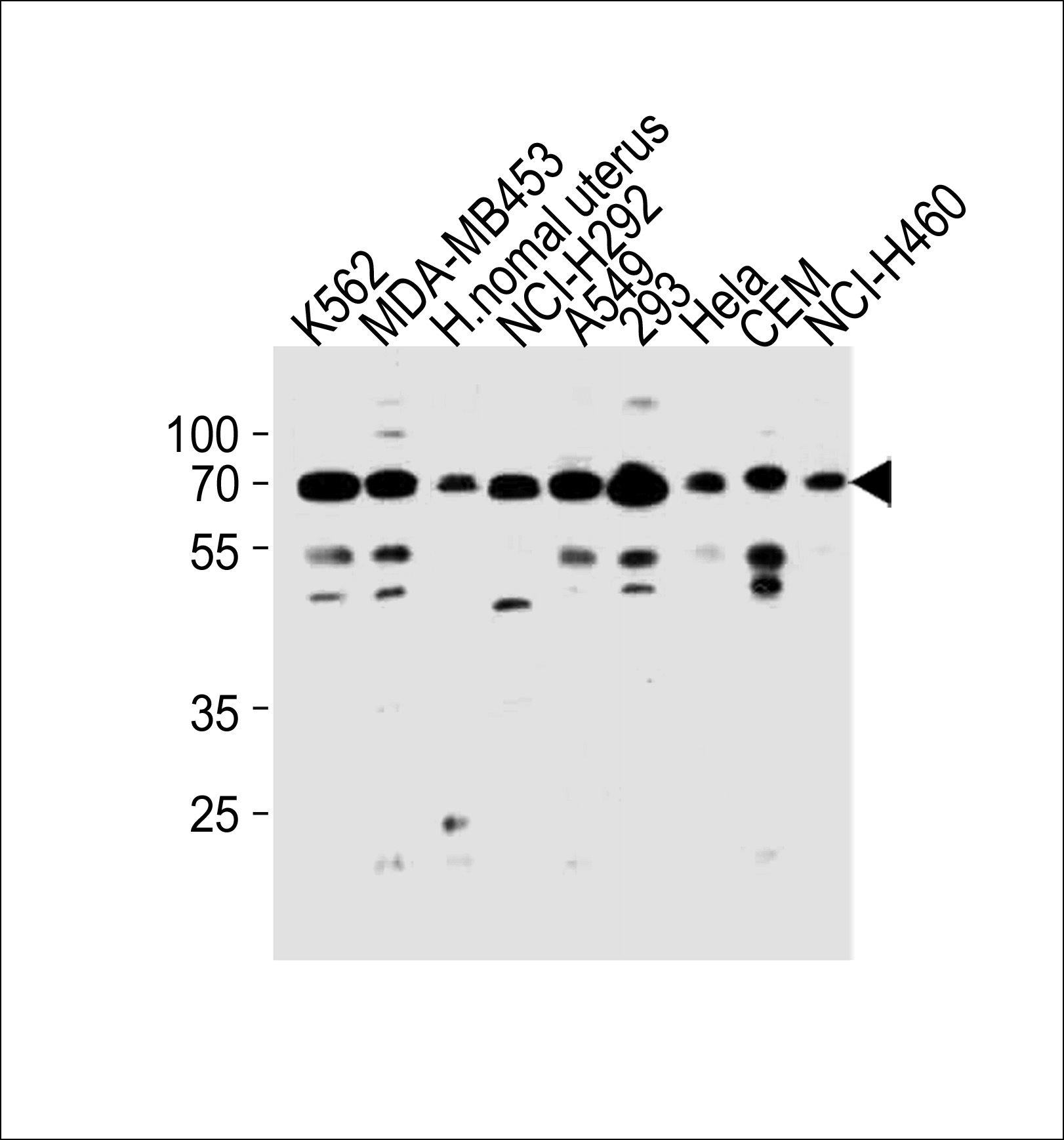Mono-ADP-ribosyltransferase that mediates mono-ADP- ribosylation of target proteins and plays a key role in the response to DNA damage (PubMed:
16924674, PubMed:
20064938, PubMed:
21211721, PubMed:
21270334, PubMed:
25043379, PubMed:
24598253). Mediates mono-ADP- ribosylation of glutamate, aspartate or lysine residues on target proteins (PubMed:
20064938, PubMed:
25043379). In contrast to PARP1 and PARP2, it is not able to mediate poly-ADP-ribosylation (PubMed:
25043379). Associates with a number of DNA repair factors and is involved in the response to exogenous and endogenous DNA strand breaks (PubMed:
16924674, PubMed:
21211721, PubMed:
21270334). Together with APLF, promotes the retention of the LIG4-XRCC4 complex on chromatin and accelerate DNA ligation during non-homologous end-joining (NHEJ) (PubMed:
21211721). Cooperates with the XRCC5-XRCC6 (Ku80-Ku70) heterodimer to limit end-resection thereby promoting accurate NHEJ (PubMed:
24598253). Involved in DNA repair by mediating mono-ADP- ribosylation of a limited number of acceptor proteins involved in chromatin architecture and in DNA metabolism, such as XRCC5 and XRCC6 (PubMed:
16924674, PubMed:
24598253). ADP-ribosylation follows DNA damage and appears as an obligatory step in a detection/signaling pathway leading to the reparation of DNA strand breaks (PubMed:
16924674, PubMed:
21211721, PubMed:
21270334). May link the DNA damage surveillance network to the mitotic fidelity checkpoint (PubMed:
16924674). In addition to proteins, also able to ADP-ribosylate DNA: mediates DNA mono-ADP-ribosylation of DNA strand break termini via covalent addition of a single ADP-ribose moiety to a 5'- or 3'-terminal phosphate residues in DNA containing multiple strand breaks (PubMed:
29361132, PubMed:
29520010). Acts as a negative regulator of immunoglobulin class switch recombination, probably by controlling the level of AICDA /AID on the chromatin (By similarity).

